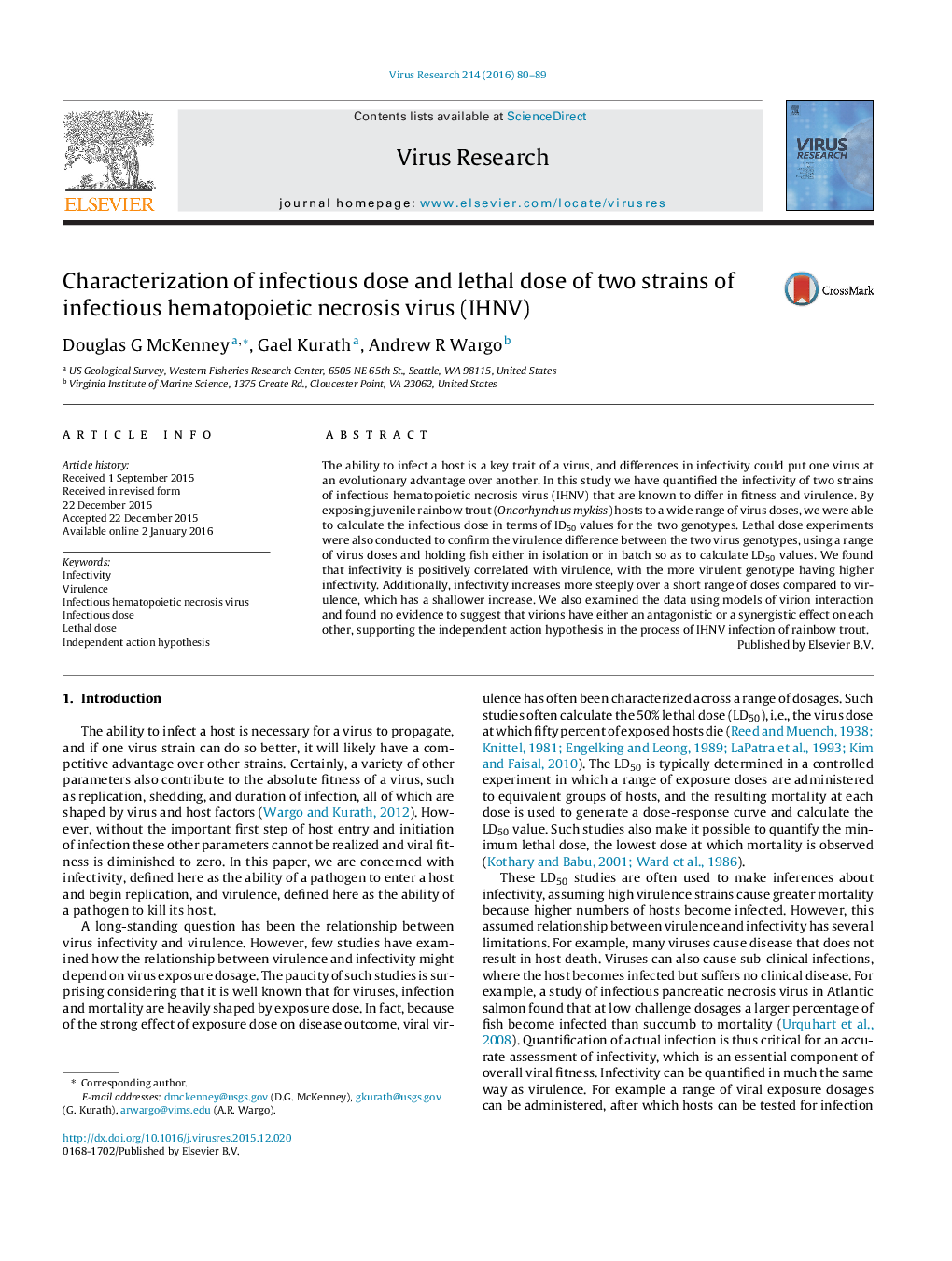| Article ID | Journal | Published Year | Pages | File Type |
|---|---|---|---|---|
| 3428017 | Virus Research | 2016 | 10 Pages |
•Infectivity was assessed for two strains of IHNV of differing virulence.•Infectivity is correlated with virulence as measured by ID50 and LD50 values.•Differences in infectivity and virulence are more apparent at certain doses.•IHNV infectivity seems to follow the independent mode of action.
The ability to infect a host is a key trait of a virus, and differences in infectivity could put one virus at an evolutionary advantage over another. In this study we have quantified the infectivity of two strains of infectious hematopoietic necrosis virus (IHNV) that are known to differ in fitness and virulence. By exposing juvenile rainbow trout (Oncorhynchus mykiss) hosts to a wide range of virus doses, we were able to calculate the infectious dose in terms of ID50 values for the two genotypes. Lethal dose experiments were also conducted to confirm the virulence difference between the two virus genotypes, using a range of virus doses and holding fish either in isolation or in batch so as to calculate LD50 values. We found that infectivity is positively correlated with virulence, with the more virulent genotype having higher infectivity. Additionally, infectivity increases more steeply over a short range of doses compared to virulence, which has a shallower increase. We also examined the data using models of virion interaction and found no evidence to suggest that virions have either an antagonistic or a synergistic effect on each other, supporting the independent action hypothesis in the process of IHNV infection of rainbow trout.
